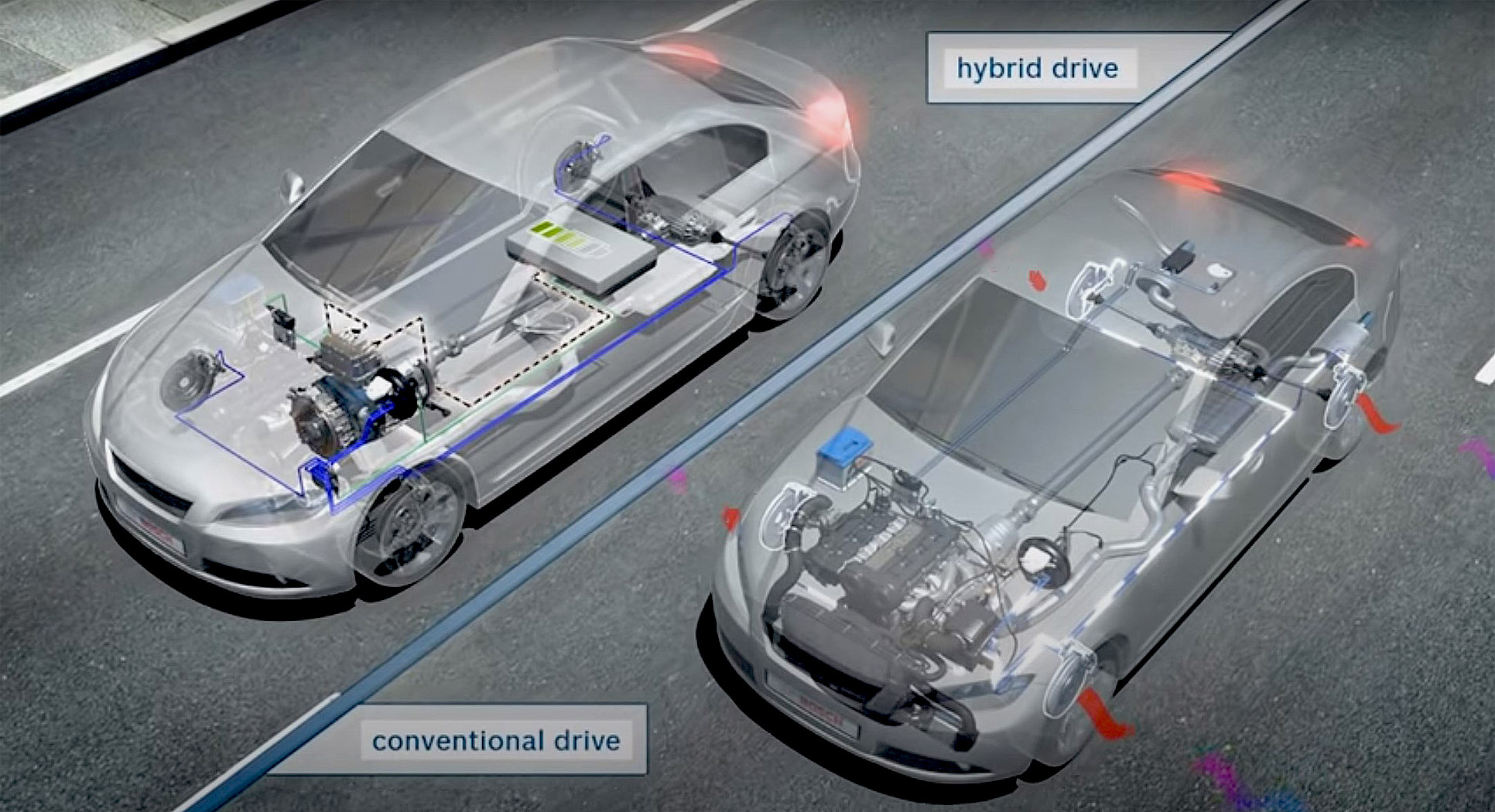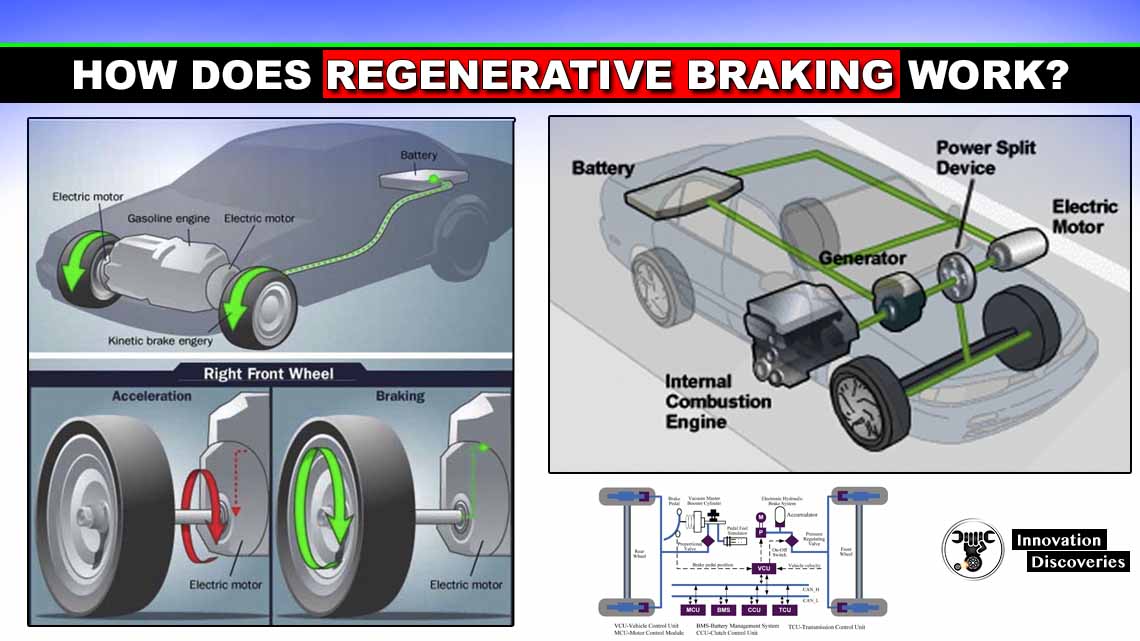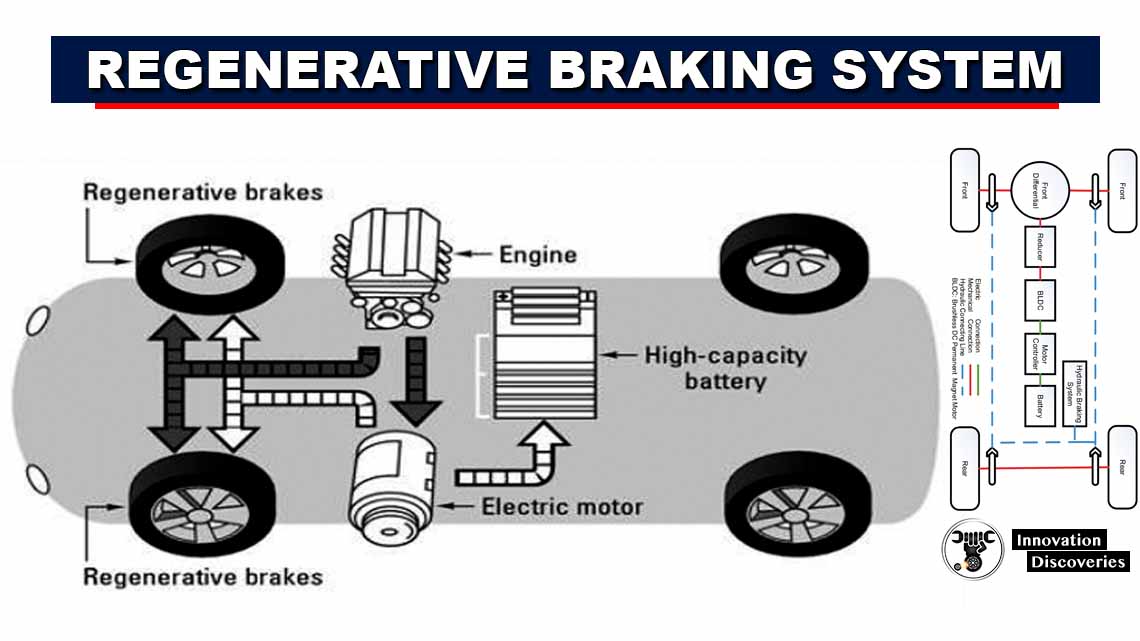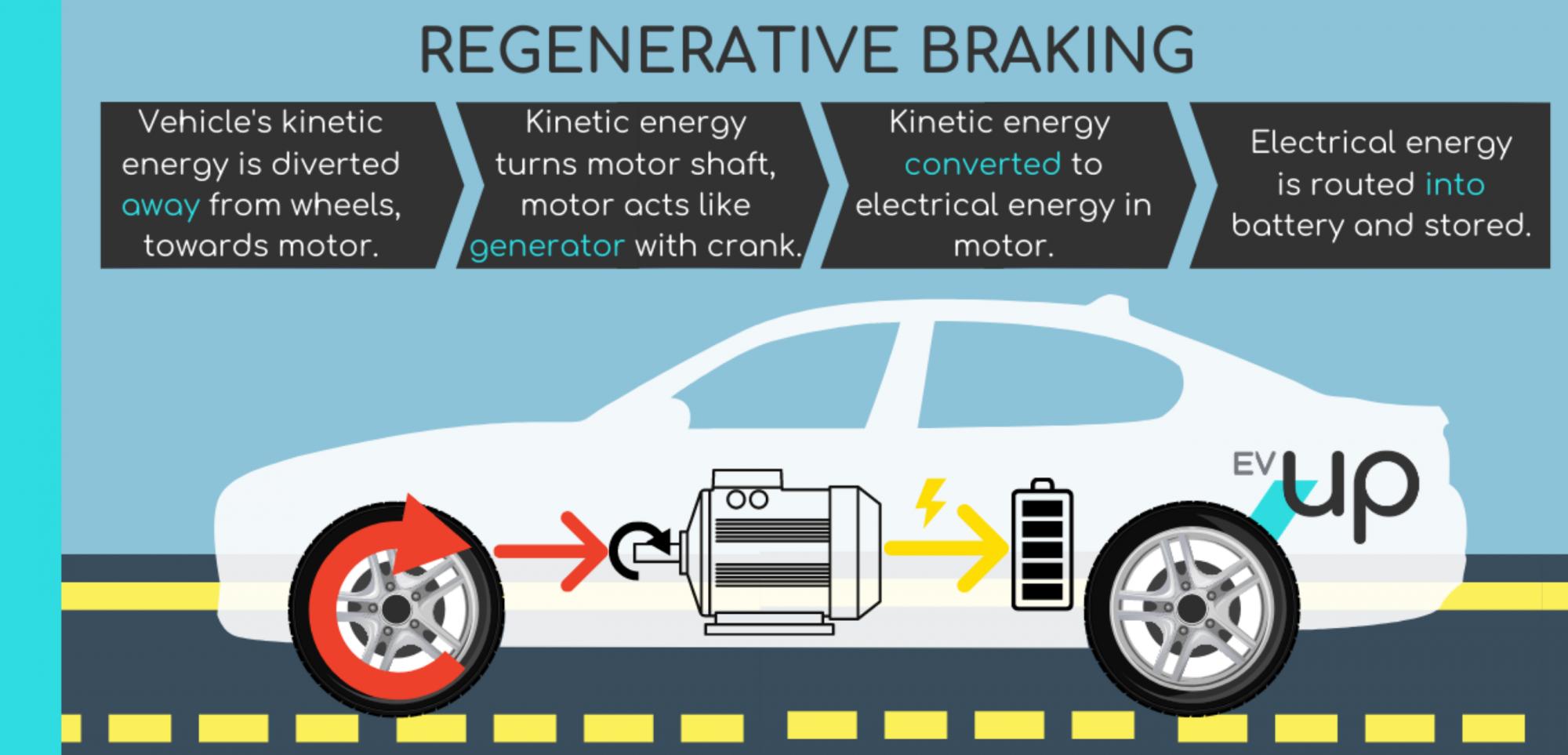Divine Tips About What Is Regenerative Braking

What Is A Regenerative Brake System At Penny Troche Blog
Unlocking the Mystery of Regenerative Braking
1. What's the Deal with This Fancy Braking System?
Ever wondered how some electric cars and hybrids seem to brake...differently? It's not some futuristic alien technology (though it feels that way sometimes!), it's likely regenerative braking. Think of it as catching energy that would normally be lost as heat, and putting it back into the battery. Pretty neat, right? Instead of just grinding your brake pads and releasing all that kinetic energy into the atmosphere, you're essentially recycling it.
Regular brakes work by creating friction — pressing brake pads against rotors or drums. This friction slows you down, but it also generates a lot of heat, which is simply wasted energy. Regenerative braking, on the other hand, uses the electric motor in the car as a generator. When you hit the brakes (or sometimes even just lift your foot off the accelerator), the motor reverses its function, becoming a generator that captures the kinetic energy and sends it back to recharge the battery. This is the "regenerative" part — you're regenerating electricity from the braking process.
So, imagine you're cruising down a hill. With regular brakes, you'd constantly be tapping the pedal, burning off energy and wearing down your brake pads. With regenerative braking, you can often just ease off the accelerator and let the motor do the work. It slows you down, and the battery gets a little top-up in the process. Win-win! It's like getting free gas (or electricity, rather) every time you slow down.
While regenerative braking is typically found in electric and hybrid vehicles, the principles are applicable anywhere you have an electric motor. Some trains and even industrial machinery use similar systems to improve efficiency. The core concept is always the same: recapture kinetic energy to reduce waste and improve overall performance.

The Inner Workings
2. Diving Deeper into the Technology
Okay, let's get a little more technical (but not too technical, I promise!). At the heart of regenerative braking lies the electric motor. Normally, this motor uses electricity from the battery to turn the wheels and propel the car forward. However, when you engage regenerative braking, the motor essentially switches roles.
Instead of drawing power, the motor becomes a generator. When the wheels turn the motor shaft (because you're slowing down), the motor produces electricity. This electricity is then fed back into the battery, recharging it. The resistance created by the motor acting as a generator also provides the braking force, slowing the car down. This process isn't quite as powerful as traditional friction brakes, which is why regenerative braking is usually combined with standard brakes.
Modern regenerative braking systems are quite sophisticated. They use sensors and control algorithms to determine the optimal amount of regenerative braking to apply, based on factors like the speed of the car, the driver's braking input, and the battery's state of charge. The system needs to carefully balance regenerative braking with friction braking to ensure smooth and safe deceleration.
Think of it like a dance between the electric motor and the traditional brakes. The regenerative braking system tries to do as much of the work as possible, but when more stopping power is needed, the standard brakes kick in to assist. This helps to maximize energy recovery while still providing reliable braking performance in all situations.
.webp)
Benefits Beyond Fuel Savings
3. More Than Just a Green Feature
Sure, the biggest advantage of regenerative braking is that it helps to improve fuel efficiency (or in the case of electric vehicles, extend the driving range). But the benefits go far beyond just saving a few bucks at the pump (or charging station). Regenerative braking can also significantly reduce wear and tear on your brakes. Since the electric motor is handling a good portion of the braking duties, your brake pads and rotors last much longer. This means fewer trips to the mechanic and less money spent on brake repairs. Who wouldn't want that?
Another notable advantage is reduced emissions. By recapturing energy and reducing the need for friction braking, regenerative braking helps to decrease the amount of particulate matter released into the air. Traditional brakes release tiny particles as they wear down, contributing to air pollution. Regenerative braking minimizes this effect, making vehicles cleaner and more environmentally friendly.
Regenerative braking can also enhance the driving experience. Some drivers find that it provides smoother and more predictable deceleration, especially in stop-and-go traffic. The regenerative braking system can be programmed to provide a certain amount of "one-pedal driving," where you can control the vehicle's speed primarily with the accelerator pedal. Lifting off the accelerator provides a significant amount of braking force, allowing you to slow down or even come to a complete stop without touching the brake pedal. This can make driving more relaxing and intuitive.
Finally, consider the overall impact on sustainability. By recapturing and reusing energy that would otherwise be lost, regenerative braking contributes to a more sustainable transportation system. It reduces our reliance on fossil fuels, lowers emissions, and conserves resources. In a world increasingly focused on environmental responsibility, regenerative braking is a valuable technology that helps us move towards a greener future.

Are There Any Downsides? The Flip Side of the Coin
4. Considering the Potential Drawbacks
While regenerative braking offers numerous benefits, it's not without its potential drawbacks. One common concern is that it can sometimes feel different from traditional braking systems. The braking force may vary depending on the battery's state of charge, which can take some getting used to. Also, in certain situations, like very cold weather or when the battery is fully charged, regenerative braking may be limited or unavailable. This is because the battery can't accept more energy when it's already full or when it's too cold to function properly.
Another potential issue is that regenerative braking systems can sometimes be more complex and expensive than traditional braking systems. This complexity can lead to higher maintenance costs and a greater risk of malfunctions. However, as the technology matures and becomes more widespread, the cost is likely to decrease.
Some drivers also find that regenerative braking can make it more difficult to perform certain maneuvers, like trail braking (using the brakes lightly while turning). This is because the regenerative braking system can sometimes interfere with the driver's ability to precisely control the car's deceleration. However, most modern regenerative braking systems are designed to minimize this effect and provide a more predictable and intuitive braking experience.
Despite these potential drawbacks, the advantages of regenerative braking generally outweigh the disadvantages. As technology advances, regenerative braking systems are becoming more refined and reliable, making them an increasingly attractive option for improving fuel efficiency and reducing emissions.

Regenerative Braking System Design At Joyce Collins Blog
Regenerative Braking
5. What's Next for This Innovative Technology?
Regenerative braking is already making a significant impact on the automotive industry, but its potential is far from fully realized. As electric and hybrid vehicles become more prevalent, we can expect to see even more advanced and sophisticated regenerative braking systems. Future systems may be able to capture even more energy, further extending driving range and reducing emissions. Think of a world where you rarely, if ever, need to replace your brake pads!
One area of development is improving the efficiency of energy storage. Current batteries have limitations in terms of how quickly they can accept energy during regenerative braking. Future batteries with higher charge rates and greater energy density will allow for more effective energy capture and storage. This will lead to even greater fuel savings and improved performance.
Another trend is the integration of regenerative braking with other advanced driver-assistance systems (ADAS). For example, regenerative braking could be combined with adaptive cruise control to automatically slow down the car when approaching slower traffic. This would not only improve safety but also maximize energy recovery. Imagine a system that anticipates your braking needs and seamlessly blends regenerative and friction braking to provide the smoothest and most efficient deceleration possible.
Beyond automotive applications, regenerative braking is also finding its way into other areas, such as trains, elevators, and industrial machinery. As we continue to seek more sustainable and efficient ways to power our world, regenerative braking will play an increasingly important role. The future of regenerative braking is bright, with the potential to transform the way we think about energy use and transportation.

EV Regenerative Braking System, Component And Working System E
FAQ
6. Clearing Up Common Misconceptions
Still have questions about regenerative braking? Here are some answers to frequently asked questions:
7. Question
Answer: Generally, yes. However, in extremely cold weather or when the battery is fully charged, regenerative braking may be limited or unavailable. This is because the battery needs to be at an optimal temperature and have available space to accept the energy.
8. Question
Answer: No. Regenerative braking is typically used in conjunction with traditional friction brakes. When more stopping power is needed, the standard brakes kick in to assist.
9. Question
Answer: Yes! By recapturing energy and reducing wear and tear on your brakes, regenerative braking can save you money on fuel (or electricity) and brake repairs. It's an investment that pays off in the long run.
10. Question
Answer: Not at all. While the braking feel may be slightly different, most drivers quickly adapt to regenerative braking and find it to be a smooth and intuitive experience.